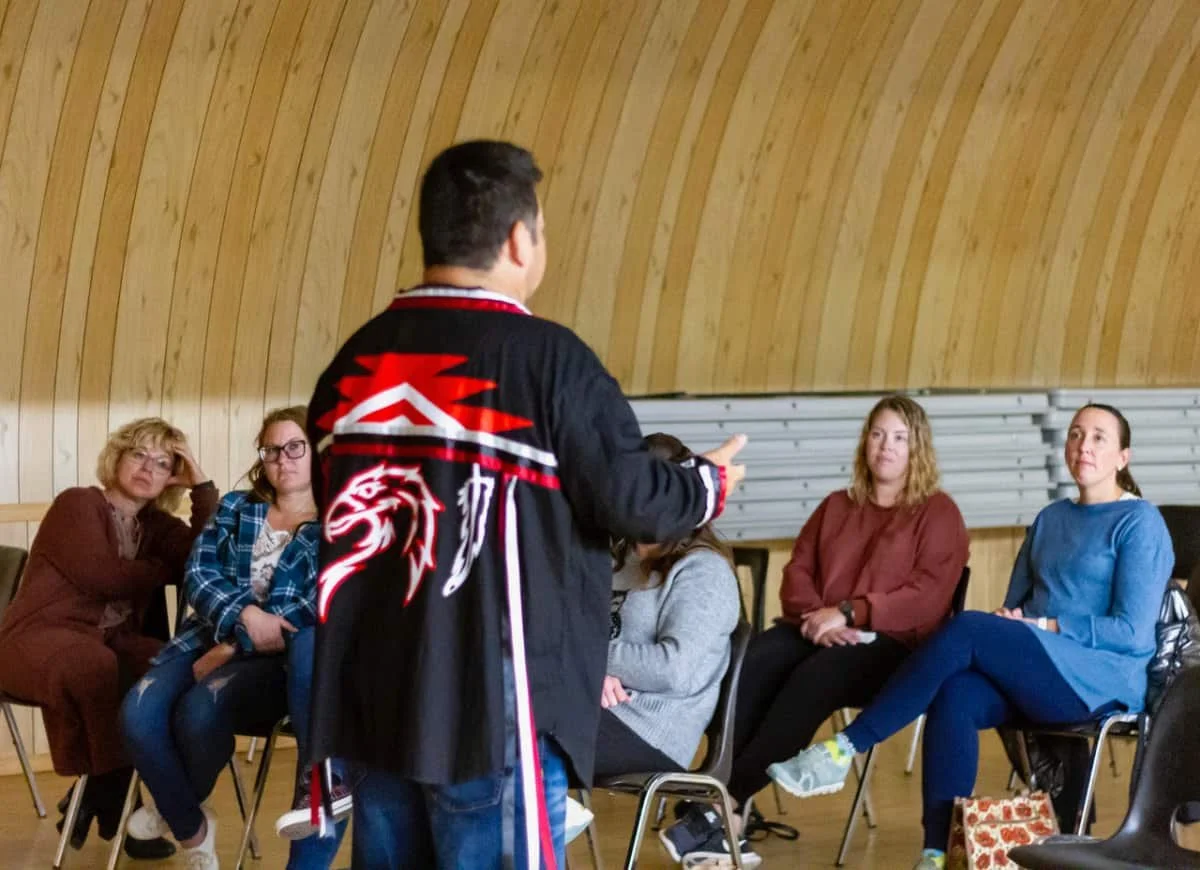The Legacy of Residential Schools
By Annie Duncan
“Tonight, you are the jury. You are the adjudicators, and I want you to decide what you would compensate them. How would you quantify this?” asked Tony Stevenson.
Stevenson spoke on the tragedies of Residential Schools to the residents of Dodsland on the evening of September 20 as one of his stops on the Legacy of Residential School Tour.
Tony Stevenson speaks at Dodsland on Sept. 20. PHOTOS BY ANNIE DUNCAN, click for larger images
Stevenson is an Anishinaabe First Nation from Treaty 4 land and residential school survivor who attended the Qu’Appelle Indian Residential School in Labret, Saskatchewan, from grades five to twelve. He has dedicated his time and efforts to educate the public on the impact of Residential Schools on the lives of Indigenous children and families. He does this through the stories of his own experiences and those of his brothers and sisters who survived such tragedies.
“I believe in what we do. It’s about creating that respective dialogue and respectful community about our past,” said Stevenson.
Stevenson describes his first experience with the Qu’Appelle Indian Residential school as a visitor in 1980 as a positive one that gave him a feeling of acceptance he didn’t have in the “white world.” He was greeted by people he describes as; beautiful, healthy, young, and energetic with distinctive long black hair and chiselled cheekbones—his people.
When he was admitted into the school in 1981, he explained that it was not all he was expecting it to be. He recalls being treated with less dignity than the older kids and described the First Nation caretakers as cold, strict, and lacking empathy. Knowing what he knows now, Stevenson believes they were dealing with unresolved issues from their time in Residential Schools and the hidden truth of their painful past still looming over them.
The abuse Stevenson suffered, including sexual assault, set him on the wrong path impacting every aspect of his life and resulting in him going to jail. Although, it was during the time that he was incarcerated that he realized the number of indigenous prisoners. It was then he started to consider the impact of intergenerational trauma that was delicately intertwined in the history of his people.
After going public with his prosecution against the man that assaulted him and being attacked by members of the man’s family, almost losing his life, he dedicated himself to helping others through the individual assessment process created to compensate survivors. The process is often a draining and painful experience, and Stevenson’s lack of faith in the justice system caused him to go out on his own and offer services to his people at no cost.
Stevenson began his journey of educating the public on the truth nearly four years ago, but he became more involved in his pursuit of knowledge sharing after the discovery of the 215 children at the Kamloops Indian Residential School.
“There was a belief that this history didn’t happen,” said Stevenson.
Stevenson sheds light on the events that occurred in our country’s past so Canadians can own up to their history so that it doesn’t repeat itself. He believes only real and lasting change can occur when we face the truth head-on.
Stevenson played a documentary called “We Were Children,” a bone-chilling story of two Residential School survivors, Glen Anaquod and Lyna Hart, for the crowd hoping the shocking truth would resonate with them. Stevenson explains that he doesn’t expect viewers to remember every fact and detail but wants them to leave with a feeling about what they learned.
At the film’s end, he asked the crowd the same question; How would you quantify this? Most sat silent until a member of the crowd responded, “You can’t.”
To this day, First Nations Leaders and Elders struggle with a solution to the continuing cycle of abuse and suicide.


